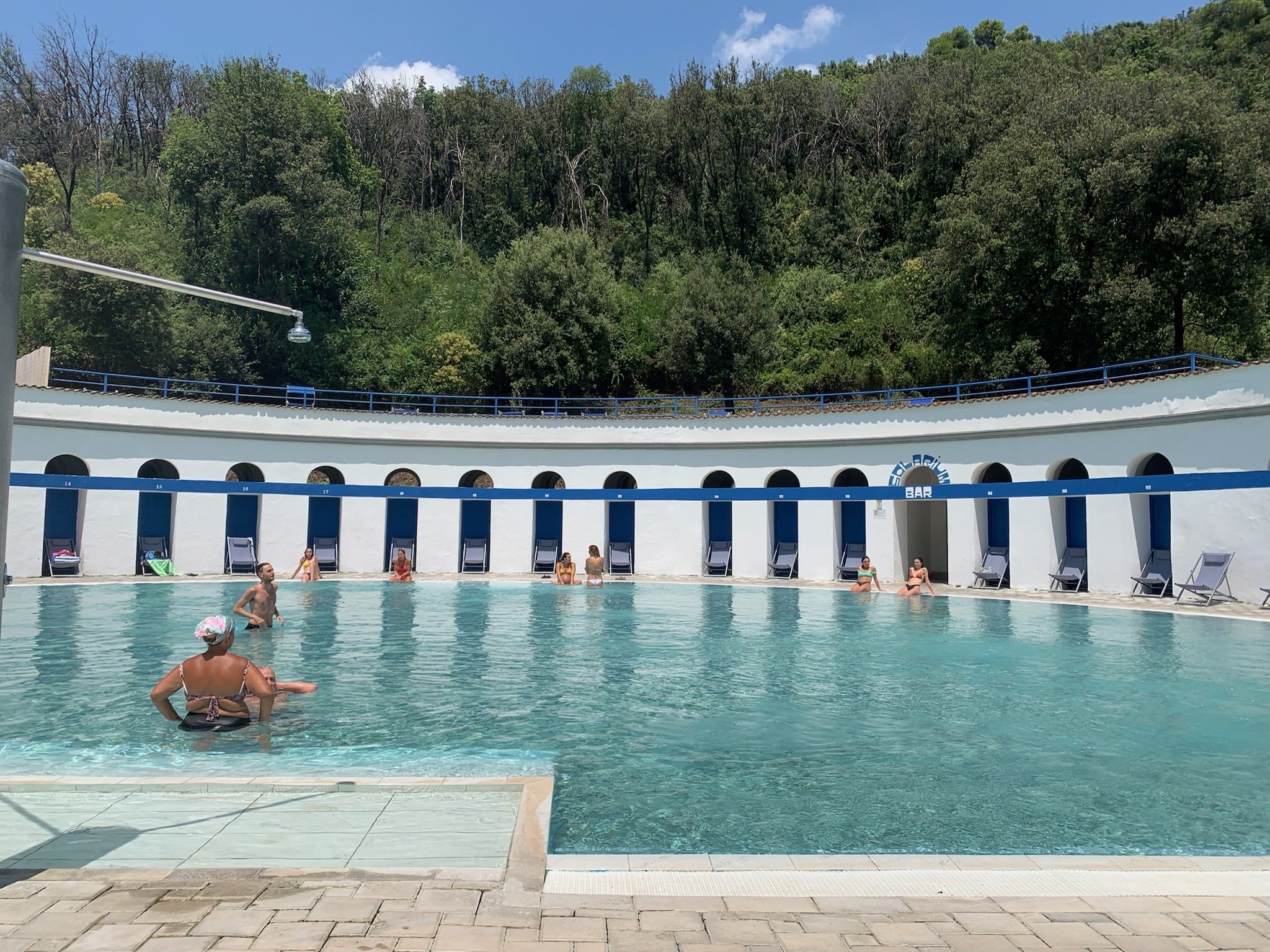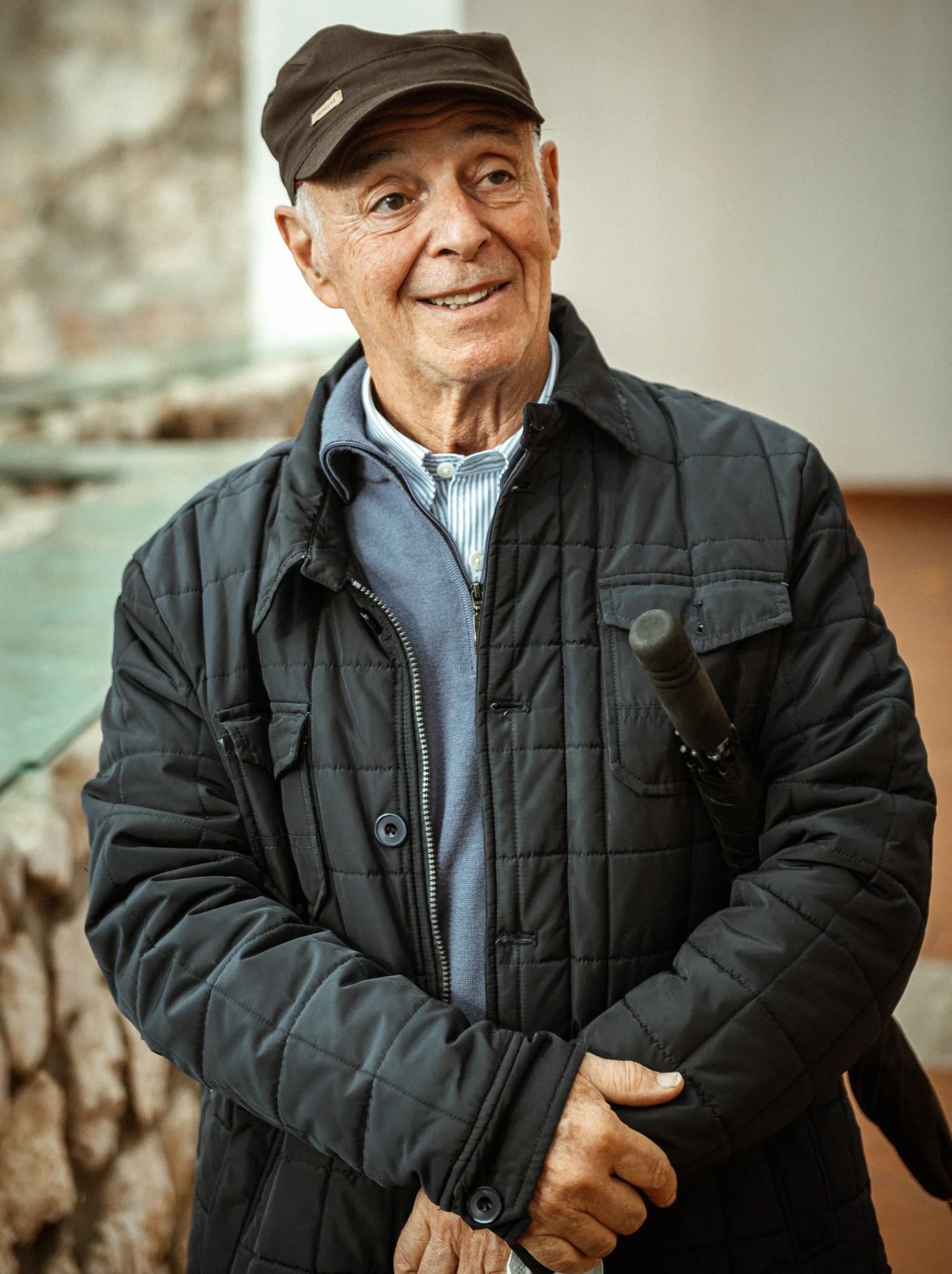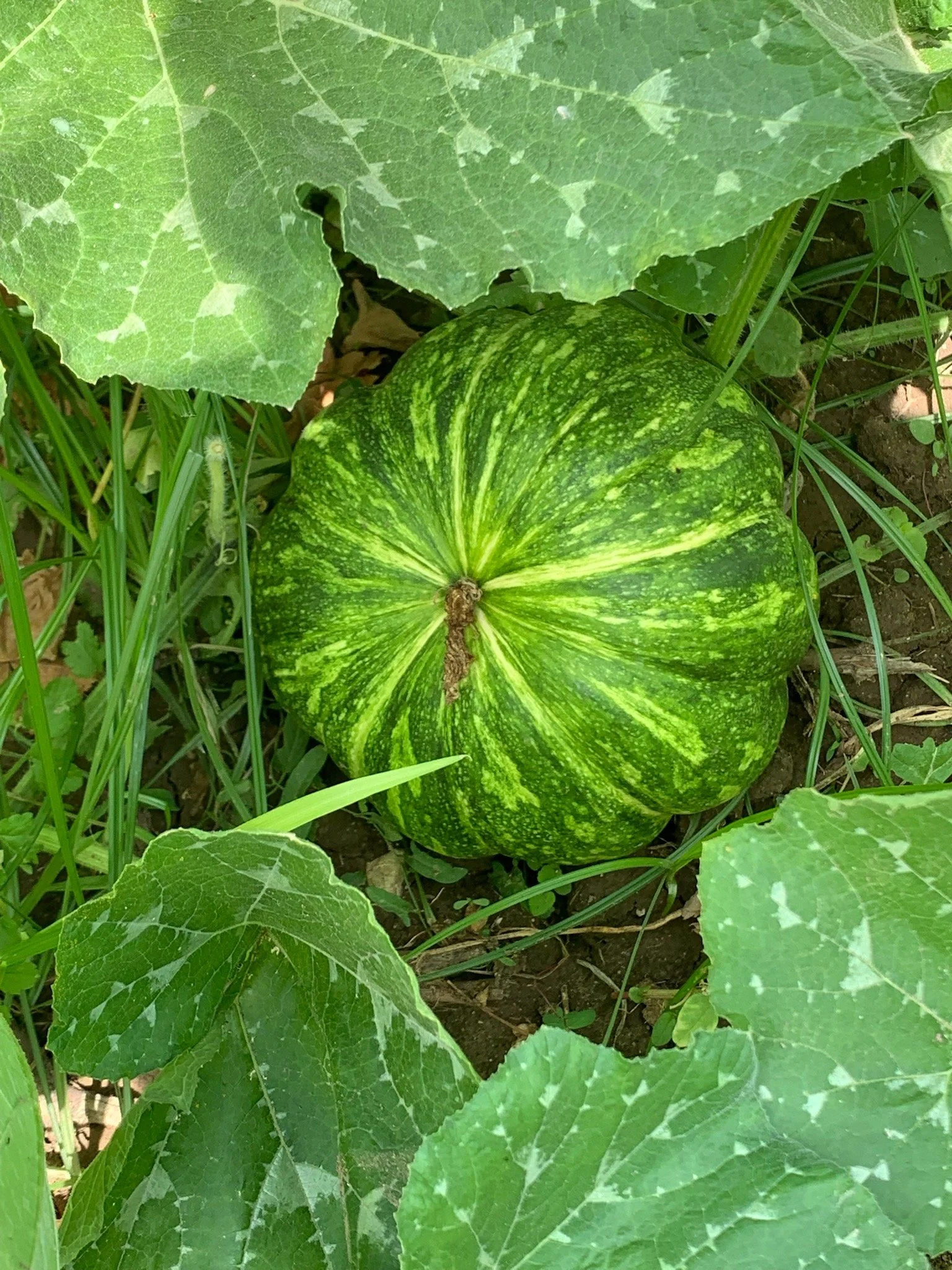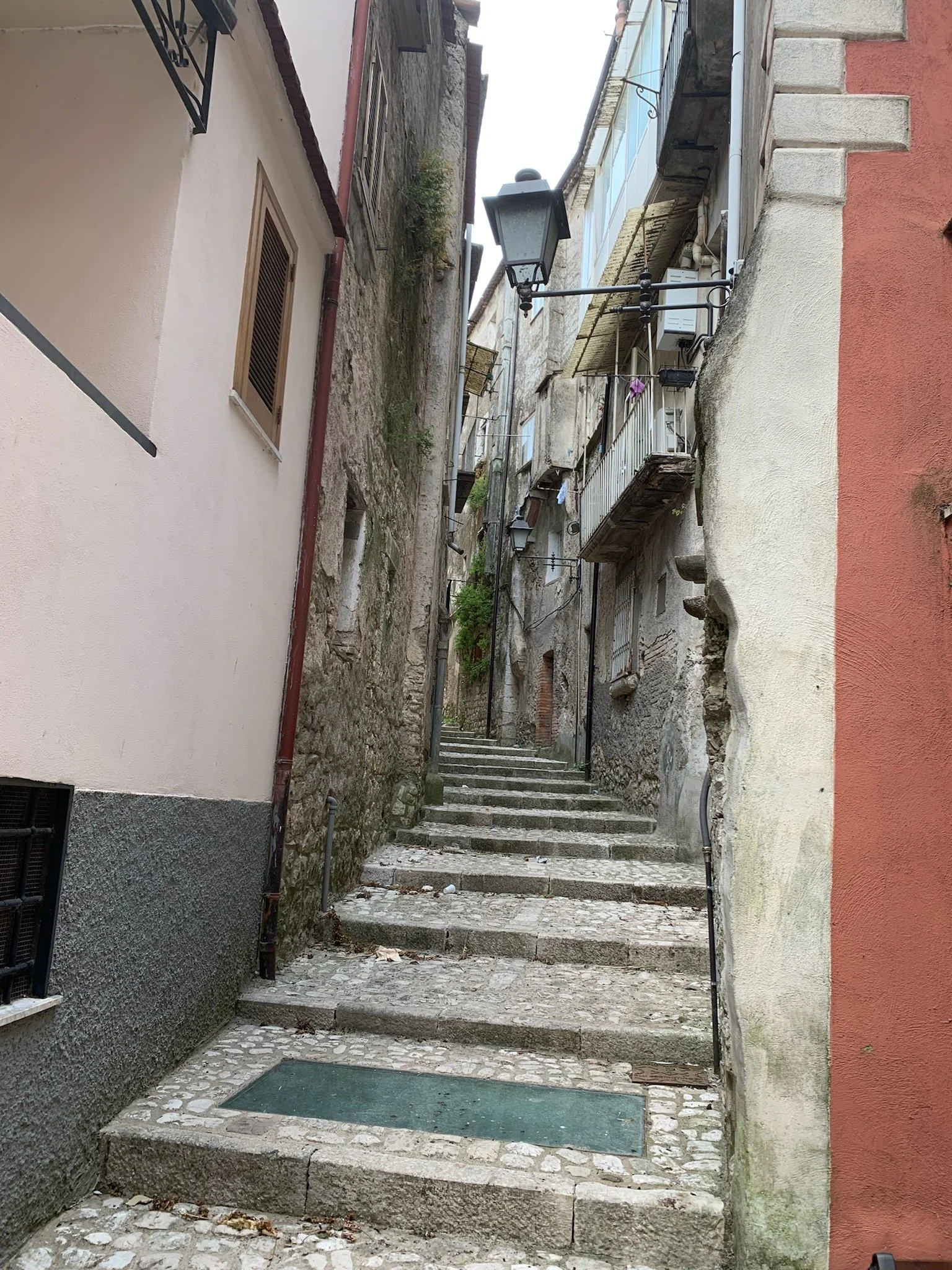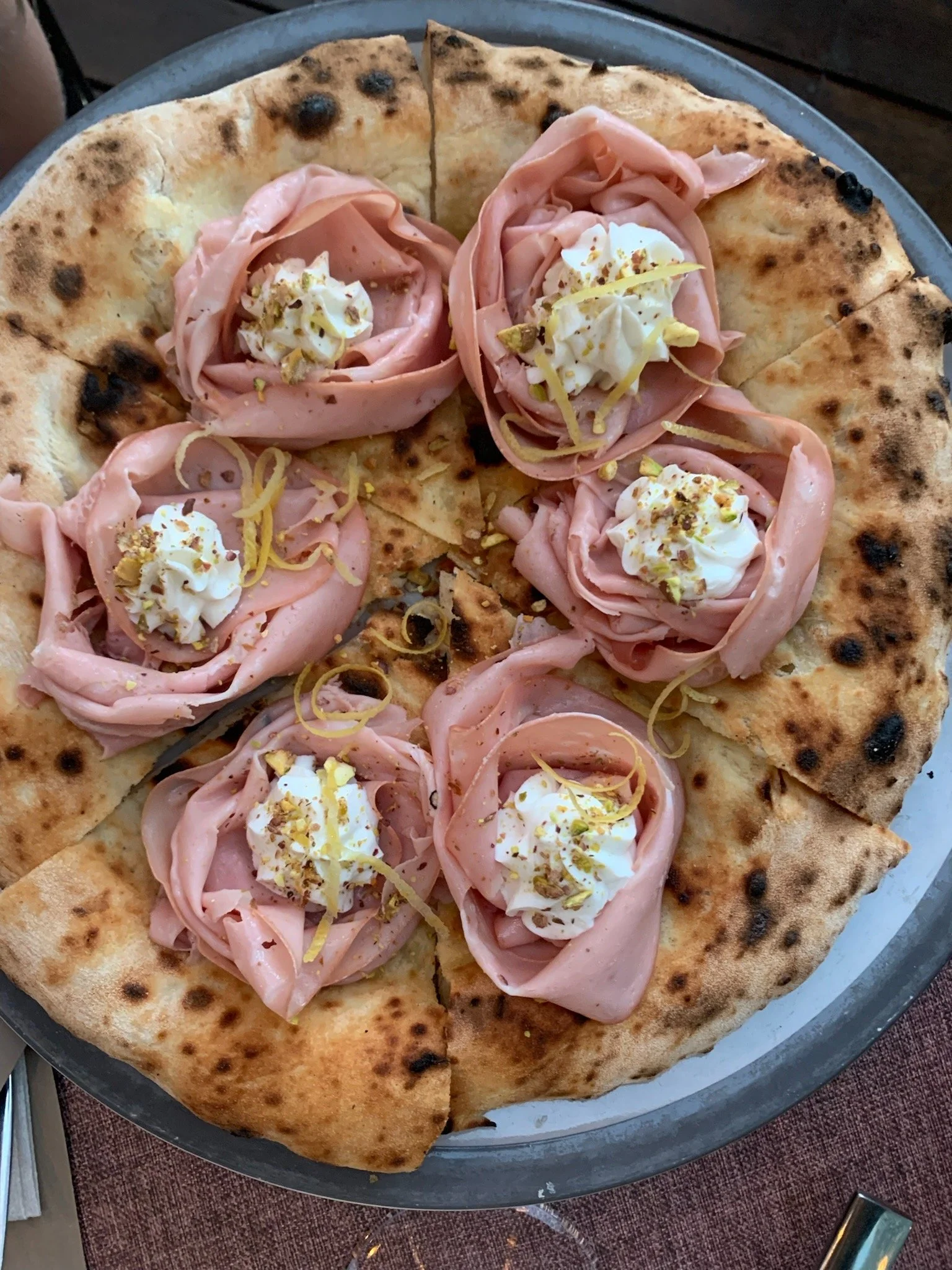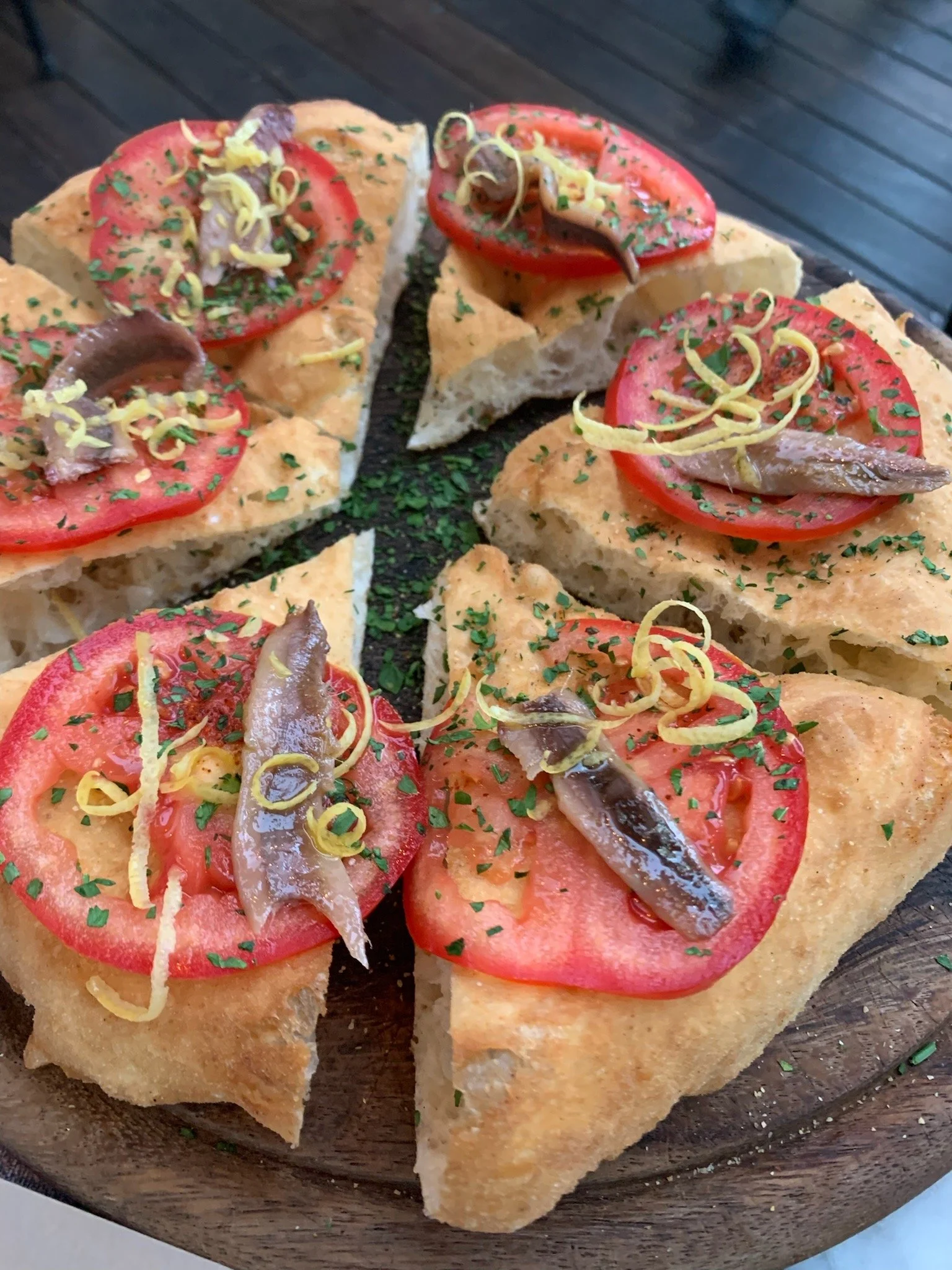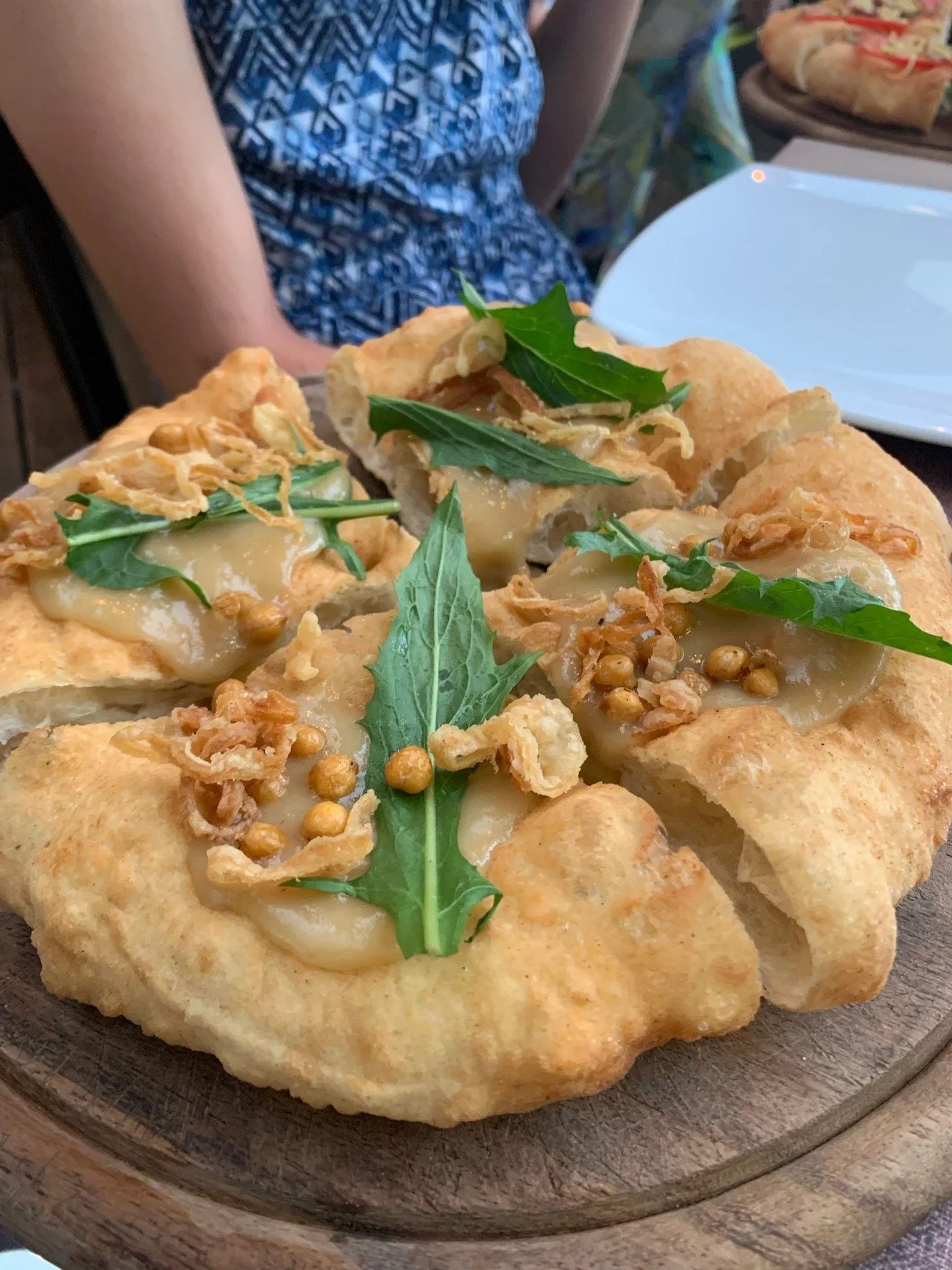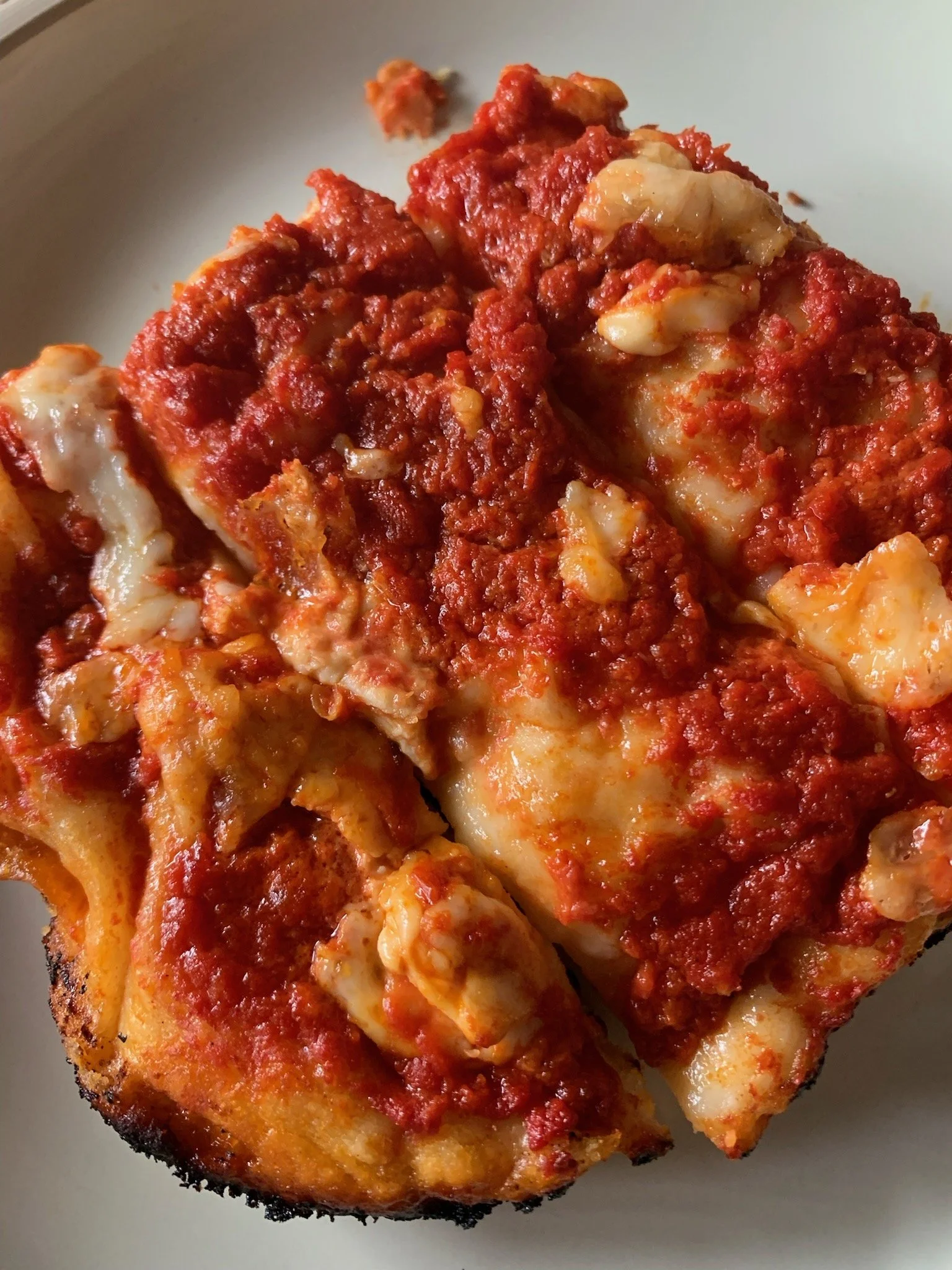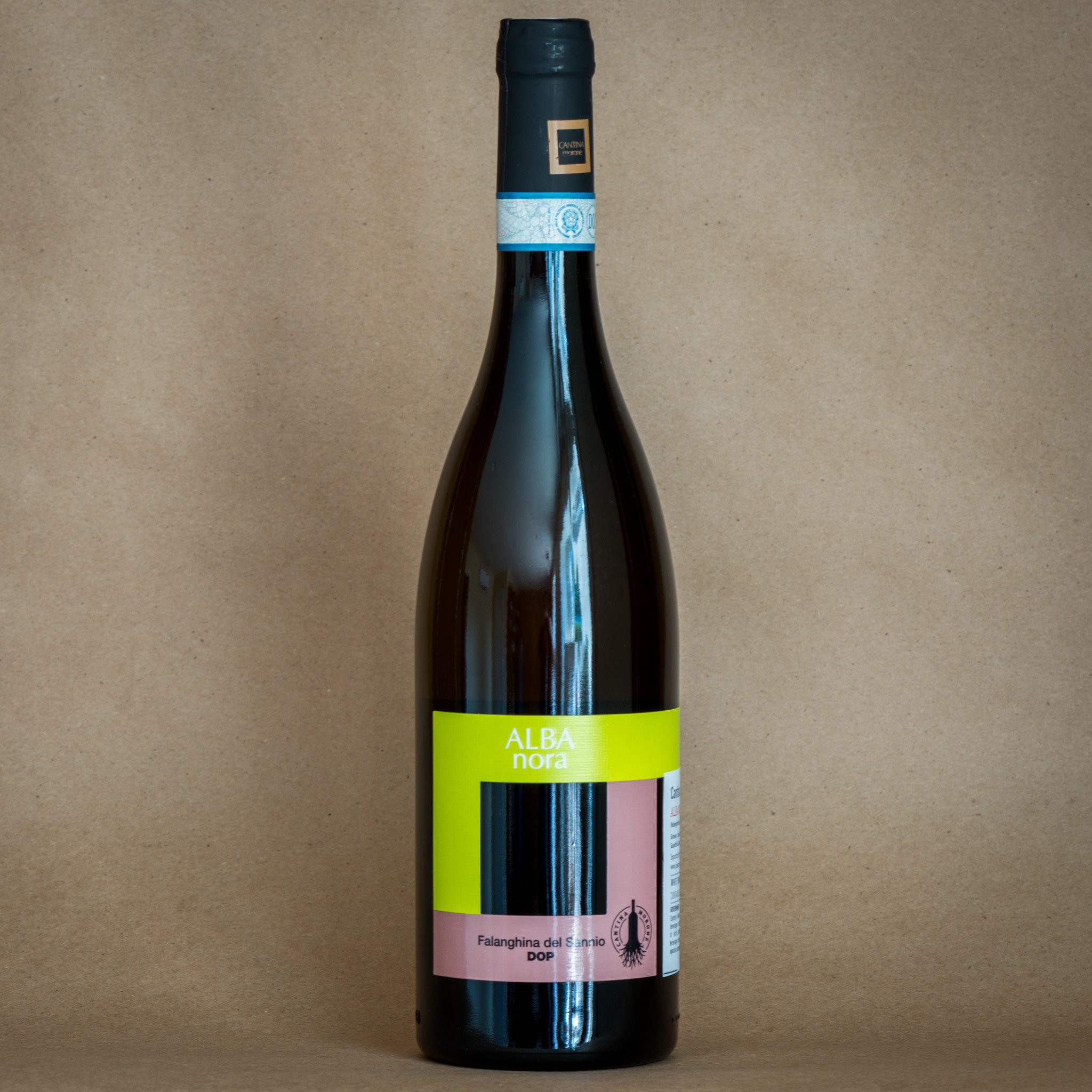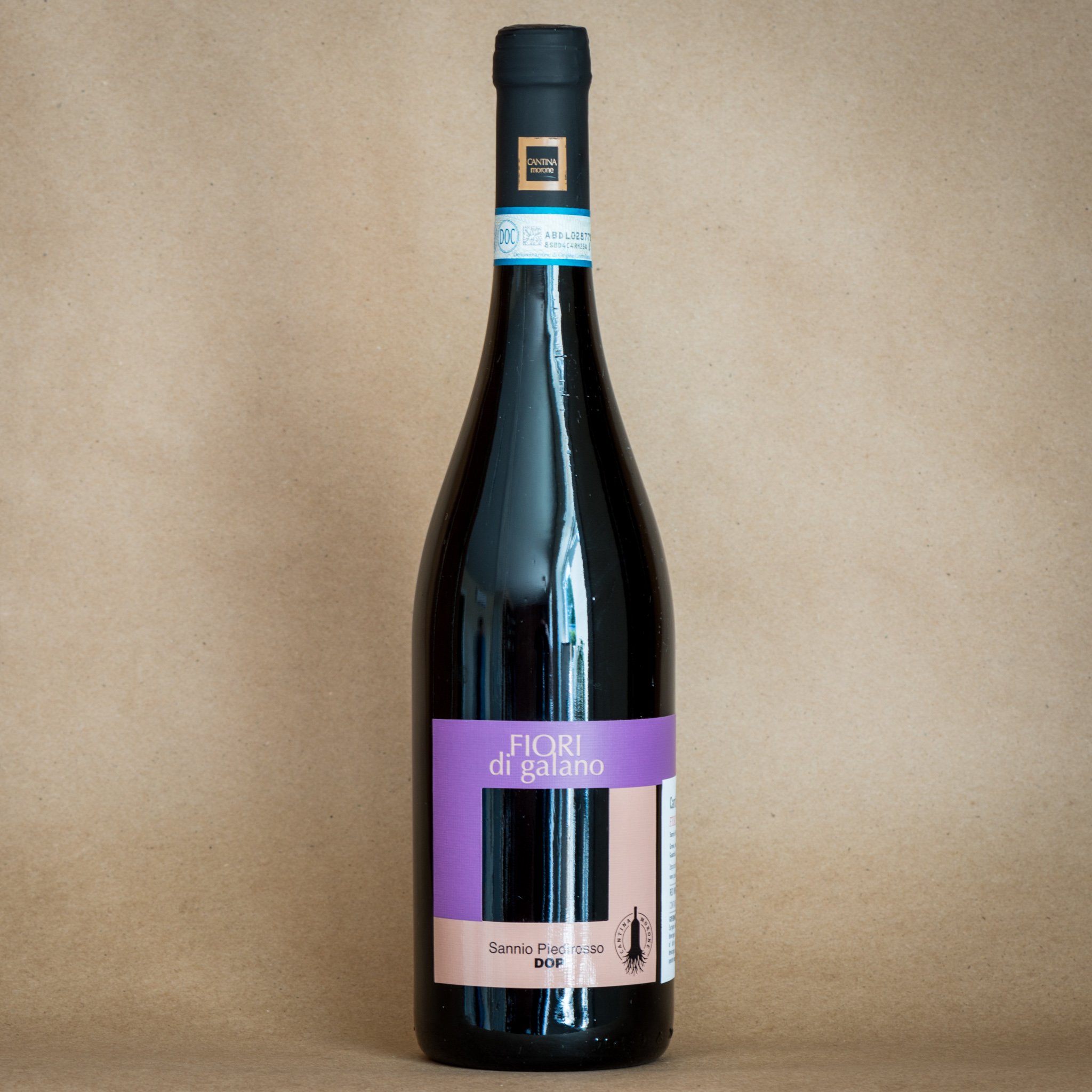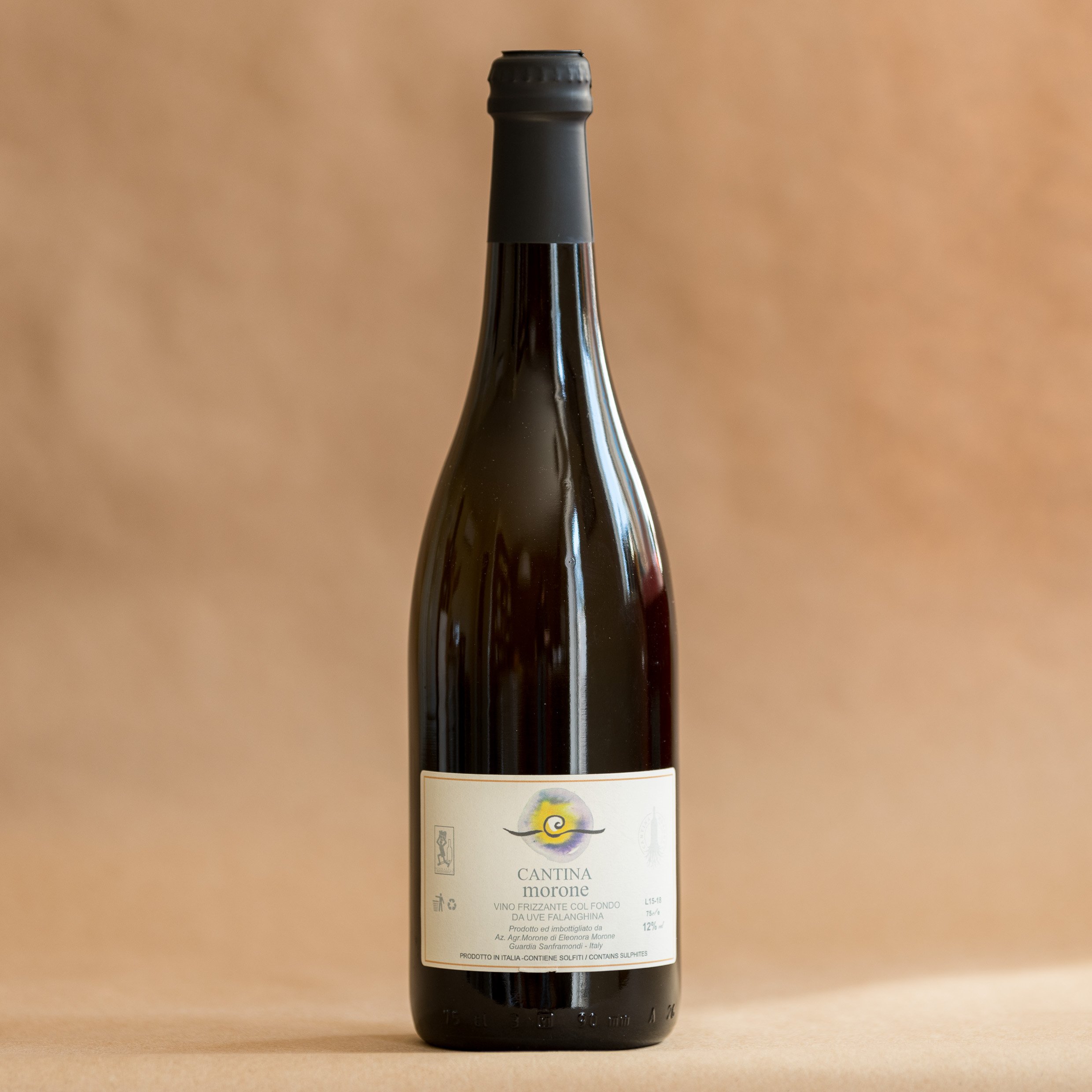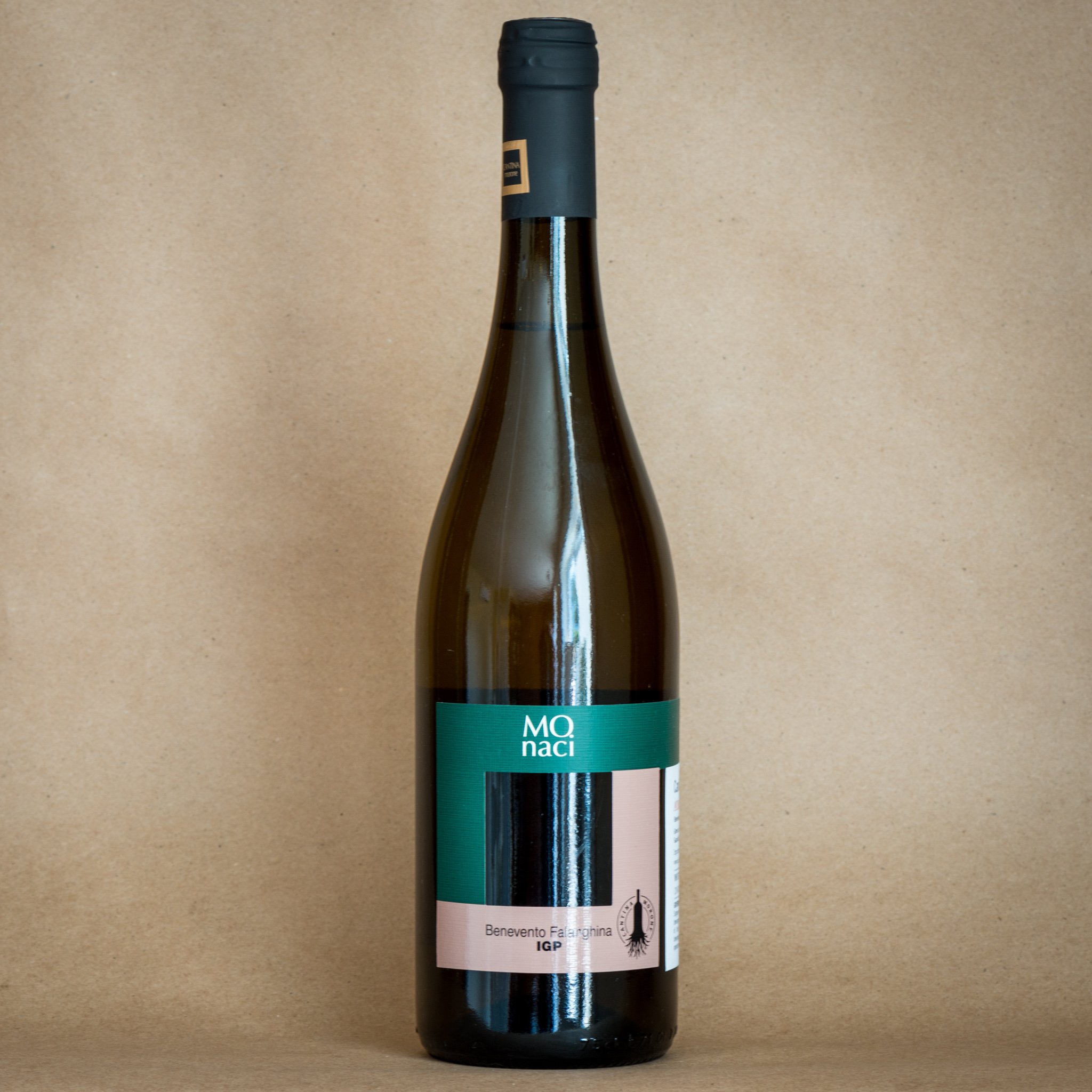Pizza journal, vol. 2. Three scenes in Campania.
July 7th, 2022
Part one. The underworld.
Sulfur rises from the earth. It passes through freezing water, and sticks to my legs. My feet wobble on round river stones. The liquid elicits a flight reaction. I force my body deeper. It is painful. I collapse wholly under the surface. Thermal normalization never comes. Completely submerged, then floating, every second is a struggle to remain in the frigid pool.
Talese Terme smells like eggs. Elegant gardens surround the spring. Columns, statues, art nouveau posters of bathers with parasols drinking sulfurous water as a curative. The literature that accompanies my 12 euro entrance fee suggests Talese’s fizzy water is a miracle liquid to heal many small maladies. Two long arcs of whitewashed alcoves surround the pool. A reclining chair is tucked into each alcove. They are comfortable. After the plunge I sink into one, and doze off. Cognitive function is gone. My body uses all available power to return its temperature to the normal range for land mammals.
Locals migrate from pool to solarium, and from alcove to water’s-edge. But the cast of characters is constant. Tickets are sold for three-hour increments. The same two dozen bathers that are present when I arrive are basking in the southern Italian sunshine when I depart. Through heavy eyelids, I admire their regular movements. It seems they are the mechanism of a pool-sized clock. The clusters of bodies are parts of a wide, orchestrated motion. Does it continue outside the pool, through the dappled gardens, across the town? Or does synchronicity only extend to beings enveloped by the sulfurous cloud? Is the gas satan’s secret weapon? Are we idle at his behest? I’m pulled under by dreams. My eyes flit open for a second. Bronzed pieces of a cosmic machine rotate under the mezzogiorno sun. I inhale deeply, and pass again through the curtain.
With 30 minutes of my allotment left, I startle awake. I’m dry. It’s time to go. Maria is making pizza. My skin is now pink from radiation, not cold.
Part two: Angel’s wings.
It’s an improbable location for a butterfly museum. Down a winding street with stones trodden smooth by medieval oxen. Inside old town walls, below a monolith hewn from rock that once served as a keep. Single-file passageways for nobility fleeing from this imposing mountain fortress lead to a spare modern room filled with angel’s wings. A lawyer of some kind lived here. I’ve forgotten details. His life as a collector is the least interesting part of our story. Two sullen administrators from the town hall are our guides. They have been conscripted to explain Guardia Sanframondi’s deconsecrated church, the restored paintings of Paolo de Matteis, a minor local 17th century artist whose work once adorned the chapel and the secret butterfly collection.
The museum’s shattered, pressure-treated glass door dredges memories of a recently-robbed Fiat. Behind the vandalised door lives an impressive collection of insects. The room is beautifully curated. Sorted by country of origin and date of capture, two long arcs of subtly illuminated old wooden cases span the room, and four decades. The colors are intact. Even luminous butterflies impaled while Truman was president look alive. Frozen. Or very still. Massive devil-horned beetles and gargantuan hairy spiders glower in a corner, but the main space is commanded by lepidoptera the color of daisies in spring, with wings of lace, and wingspans as large as hands. Picked from fields in Japan and Brazil and Formosa, the variety is arresting.
My thoughts sour. I’m certain the biodiversity in this room is no longer present across continents. An unnecessarily pessimistic outlook. Few people know less about insects than I do.
Pasquale Morone knows the microcosmos. He studies it in fields of Falanghina, and under rows of Fiano vines where his vegetable garden thrives. Pasquale is a smiling instigator for our unlicensed butterfly tour, and the trip through his hometown church and museum. Later, we see his open-air museum to the lost art of polyculture. Under a canopy of vines, he grows little bright red strawberries, giant pumpkins, all imaginable verdure: tomatoes, zucchini, kale, beans. The flavors of Campania, the food he and Maria eat every day.
Naked long-necked chickens pace in a cage at the entrance to Pasquale’s field. There are fruit trees: orange, lemon, apricot. The sun is on our backs, so we roll a few hundred feet up the road, and speak to a worker loitering behind orange construction fencing. Deeper underground, the Italian government is tunneling through these fields. A high speed train will connect Naples to Benevento to Bari. As its carriages hurtle past at 200km per hour, will they rattle Pasquale’s already nervous chickens? I’m concerned that egg quality will suffer. Preoccupied poultry won’t peck through the dust to find invasive bugs. Eggs yolks will fade from orange to yellow. Cakes will regress from sublime to ordinary. Glassy-winged sharpshooters will no longer be protein for fowl. Invasive insects will prey upon the tender skin of just-ripe Fiano bunches. Scant bottles stored in the cellar will dwindle to nothing. We’ll have to import gelato instead of wine.
Pasquale is proud of growing almost everything the Morone family eats. Coppa served with pizza lunch is from his pigs. They raise two swine per year. He’s even more proud of the lievito madre pizza crust that he proofed for 36 hours. The long rise creates an ethereal base for a simple salsa, made from Pasquale’s tomatoes. Maria Morone speaks with scorn about greasy, overly-elaborate pizza. “Flour, salt, water, tomato, a little mozzarella, it’s all you need.” I can’t think of a plausible counter-point. We are dining on the patio above their cellar. Afternoon rain is falling. The air is fresh, the “sleeping woman” mountain range is coming into sharp focus across the valley. If this is a simple life, it is also one full of sensory bliss.
Campania is saturated with color. Baked orange terracotta tiles, trees dotted with tropical fruit, flowering prickly pears. The language is floral. Pasquale shares a stream of colloquialisms to explain how farmers in Guardia Sanframondi see the universe. Country wisdom. The value of strong women, the poverty of too many children, etc. It’s clear that growing plants makes Pasquale happy. And he enjoys showing off Guardia, and the surrounding countryside.
At harvest, Pasquale and his collaborators will deliver crates of ripe Falanghina grapes to the courtyard where we dine. Maria creates a constant stream of earthly delights in the winery’s professional kitchen, enough food for a large family of hungry grape pickers. Breads, cakes, focaccias, homemade yogurts, rolls stuffed with mortadella. I suspect she never sleeps. Skylights in the cellar will be opened, and fruit will be passed into fermenters waiting below. Once the fruit descends from above, it passes into the hands of Pasquale’s children Eleonora and Giovanni, and childhood friend Anna della Porta. The trio take Pasquale’s grapes and transform them to wine.
Over dinner the following evening, Giovanni Morone explains that his father is strong, but not obstinate like many farmers in the area. He farms, and allows his children to use new ideas in the cellar. He’s accepting of the trio’s enthusiasm for biodynamic agriculture. Next year, Cantina Morone will start farming in this manner. Philosophically, it’s not too great a distance from the traditional polyculture Pasquale learned from his wife’s mother, to the principles outlined by Rudolf Steiner and his disciples. But it takes a person with an open mind and big heart to connect this region’s agricultural past with its future.
Part three: Nirvana.
It’s an improbable location for Italy’s best pizzeria. Down a winding alley paved with white stones so slick that I almost fall during the descent, even though I’ve visited pizza paradise before. Fiery rays from dusk dart up the alley, and make bas relief profiles of the facing mountains. The valley still smolders from afternoon rain. Charcoal clouds and heat lightning define the sky.
Frano Pepe pauses at our table and asks if we are enjoying the evening. It’s Thursday at 8pm, and he’s monitoring the situation. Intermittent rain is falling, enough to force guests from the “zone of silence,” a conversation-free seating area hidden in a garden below the ancient stone walls of Pepe in Grani’s alleyway entrance.
We are enjoying the evening. After two fried pizzas, it’s time for assessment. What can we accomplish? Our intentions are torn up. We chart a more viable approach. The first fried pizza had an onion cream sauce, fried chickpeas, fresh dandelion greens, and crispy onions that brought happy comparisons to the garnish on green bean casserole. Thanksgiving may be the only other day when I’ve been so full! For no real reason, the tacchino is a recurring conversational motif during time in Campania. Pasquale Morone has keen interest in the bird. He asks many questions, and expresses shock and doubt at my insistence that turkeys do indeed grow to monstrous proportions, even in the wild. When I propose that they can rest in trees, his incredulity passes a tipping point. My credibility as a certified American turkey expert is extinguished.
The second fried pizza is topped with rounds of fresh tomato, anchovies from nearby Cetara, and grated lemon zest. Pepe in Grani’s menu is a pantry full of local ingredients. The third pizza has bufala ricotta from Il Casolare caseificio piped into the center of elegant ham florets. If you need any convincing that Franco is a maestro in top form, consider the phrase “elegant ham florets” and whether your local pizzaiolo could accomplish such singular porcine beauty on a pie. A deft touch is required. The ricotta is milky and light. The ham is ornate, the shape and contour of a rose. The composition of each slice is masterful. Someone in the kitchen has practiced its form a thousand times.
The patio is airy and cool at dusk. Caiazzo has spectacular vistas, commonplace to hilltop towns in Campania. I’m comfortable in a button-down shirt and jeans. I dress up a little for pizza. It seems rude to wear shorts in the presence of greatness. Still, it's July. Maria’s disdain for American pizza styles still resonates. So we order the Sfizio al Pomodoro, a pizza whose just-cooked yellow Datterini tomatoes cause audible gasps from my daughter, and then myself. Not because they are hot (though they are) but because a fruit has never tasted more like a tomato. They are incendiary, an improvement on the golden ripe cherry picked warm from your garden vine, and popped immediately in the mouth. Impossible. Hyper-real, transcendent, the juice slightly thickened like an ancient balsamic, sweet/sour/savory at perfect pitch, 33 1/3 per element. The rest of the slice is the frame. Trapani salt is just better. Grana, sun-dried tomatoes, olive oil.
Predictably, and still surprising for a pizzeria, the desserts at Pepe in Grani are outstanding. The honey and rosemary strips are really zeppole, with a ramekin of sweetened bufala ricotta and a dusting of fine granulated sugar and orange zest. Each one I eat makes me less full. Like the pizza that started our meal, the zeppoli are pillowy, airy, as light as a fried food can possibly be.
Ricotta and pistachio ice cream comes sandwiched between hazelnut biscuits. The flavor is exceptional, somehow more “real” than confectionery flavor can be. Which is a theme. Franco tightens up each dish until the flavors are perfectly defined.
We walk down the main street of Caiazzo to our car. It is raining. The ancient black stones are lined like the furrows on my brow. How can Franco’s food be so far above everything else? Heat lightning arcs across the sky. Tomorrow we’ll cross the mountains that frame Caizzo to the east, and pass into Molise. My thoughts will stay in Campania much longer.
Tasted in Campania:
2020 Cantina Morone “Monaci” Falanghina IGP - A whiff of smoke. Apple. Serve with mozzarella di bufala, ripe tomatoes, and olive oil
2020 Cantina Morone Albanora Falanghina del Sannio - Peach aroma. Very bright. This is my favorite of Cantina Morone’s wines. Pairing possibilities abound. Grilled chicken and summer vegetables, bruschetta of caramelized onions, fresh tomatoes, cime di rapa.
2021 Cantina Morone rosato - Bottled 15 days ago. 100% Camaiola, a promising indigenous grape that used to be called Barbera, which stirred up confusion on all sides. Fresh. Light strawberry flavor. Good! Serve it with arrosticini for a fantastic simple meal.
Cantina Morone col fondo - 100% Falanghina. Faintly fizzy. Nice orchard fruit notes. Serve it with lightly fried anchovies.
2020 Cantina Morone “Fiori di Galano” Piedirosso - Bloody red-black fruit notes with dry tannin. 3,000 bottles made. Bottled six months ago. Perfect for cheese-filled ravioli in marinara.
2020 Cantina Morone “Nero Piana” Camaiola. Pronounced campfire aroma. Fruit is reminiscent of a darker/riper Sangiovese. Some tomato leaf and herb aromas. Serve with involtini stuffed with wild mushrooms.
Terre di Principe Pallagrello Bianco - Last October I walked past this winery with Anna della Porta. It’s in her hometown, and grows the same grapes that her father farms. This summer, we’ll import Anna’s version of Pallagrello, bottled under her Hesperia label. Rescuing basically unknown wine grapes like Palagrello and Camaiola speaks to the character of Franco Pepe, Anna della Porta, and the Morone family. Campania is lucky to have diligent food and wine professionals that can evangelise its many distinct flavors and I’m lucky to meet them and taste their work.

